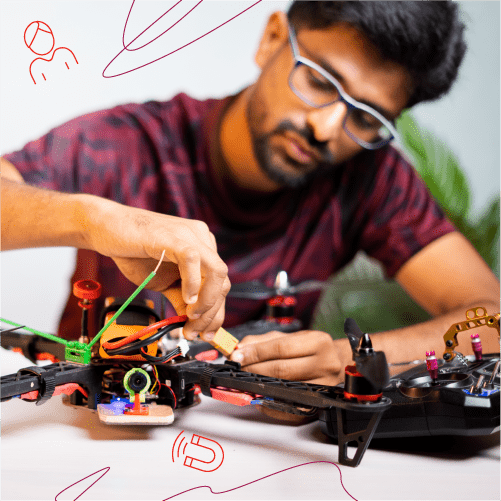Traditionally schools have taught core subjects such as Maths, Science, and Language Skills. More schools today are integrating technology into their curriculum for the sake of remaining relevant in a digital age. Some argue that digital literacies should be the fourth core subject taught in schools. However, COVID-19 introduced a new way to teach technology, e-learning.

In the past, it might have been necessary to obligate time to teach technology directly, but today, out of necessity, students have been forced to move online for their studies. Moving online revealed vulnerabilities in various rural areas throughout India. The digital divide continues be an issue faced by many.
ConnectEd’s mission is to democratise quality education for all in India. One way that we go about this is by partnering with our non-profit branch, Bloom India. Integrating technology into each subject gives students exposure to digital literacies in organic ways.
Some of these rural areas still struggle to have the same opportunities. With the help and support of Bloom India, ConnectEd has been supporting a STEM Centre. STEM stands for Science, Technology, Engineering, and Maths. STEM curriculum was introduced in the United States, and it has been implemented throughout the world. With the integration of technology, students can learn to apply these digital literacies in more natural ways.
STEM Centres and Bloom India
Bloom India is our non-profit branch, offering solutions to India’s educational poverty. Bloom India’s initiative plans to partner with schools and create STEM centres in these schools. Equipping these STEM centres with technology, internet, and proper electricity. Each centre will appoint a coordinator who organises classes, supports students, and holds them accountable for completing their assignments and experiments in the tech labs.
Being exposed to technological skills now creates future opportunities in technological fields. In a fast-paced world, it is necessary for schools to be equipping their students with the skills needed to succeed outside of the classroom. Bloom India’s support is just one way that students are given an opportunity to grow in digital literacies that they once might not have had opportunity to.
Closing the Digital Divide
Some additional suggestions to closing the digital divide should include more affordable wifi and access, opportunities to learn digital literacies, and access to more affordable technology. All these areas are challenges throughout more rural areas. However, more than ever has there been greater access to affordable internet providers.
According to the Division of Broadband and Digital Equity, in North Carolina, there are many solutions that can be implemented over time. While this is a US department, they mention a term called Digital Inclusion. Digital Inclusion seeks to ensure that all people and communities, have the same access to information and communication technologies. These inclusion policies could be implemented worldwide, but it must be said that they should also evolve along with the constant evolution of technology.



